<< Previous | Displaying results 5301-5350 of 6769 for "" | Next >>
Regina and Victor with their two sons, Harry (left) and Paul (right) at the World's Fair, New York, 1964.
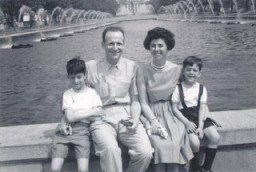
Regina with sons Harry and Paul in a swimming pool. August 1968.
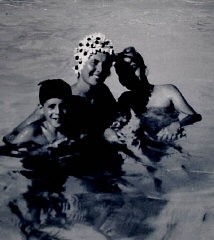
Celebration after one of Regina's sons, Harry, received the Eagle Scout Award. February 16, 1973.
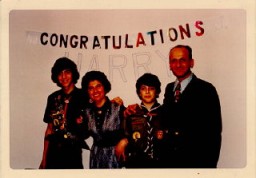
Regina at Zelazowa Wola (near Warsaw), the birthplace of Frederick Chopin, during a visit to Poland in August 1980.
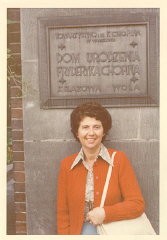
Regina and Victor celebrate their 50th wedding anniversary. New York City, May 3, 2003.
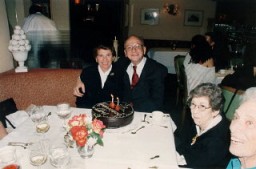
Regina Gelb displays an album of her prewar family photographs. 2004.
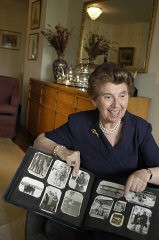
Born as Regina Laks in 1929, she was raised in Starachowice, an industrial city in central Poland. Her mother, Pola Tennenblum, was an active member of the Zionist movement. Her father, Isaac Laks, was an engineer in the lumber industry. She had two older sisters.
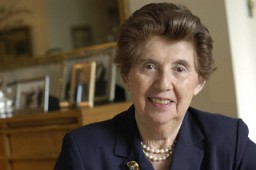
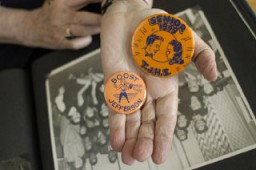
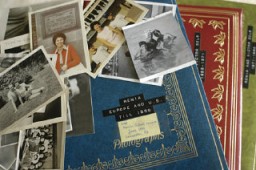
Waitstill and Martha Sharp supervise the arrival of 14 tons of milk products to distribute to children in the region. Pau, France, August 1940.
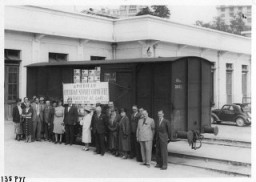
Studio portrait of Martha Sharp. Martha and Waitstill Sharp, American Unitarian aide workers, helped thousands of Jews, intellectuals, and children in Prague, Lisbon, and southern France in 1939–1940.
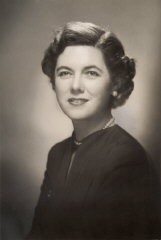
Mugshot of Colonel Joachim Peiper, defendant in the Malmedy atrocity trial. He was sentenced to death by hanging. Photograph taken ca. 1946.
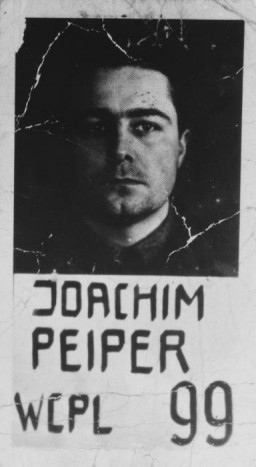
Bodies of US soldiers killed by Waffen SS troops during the Malmedy Massacre on December 17, 1944. Photograph taken in January 1945.
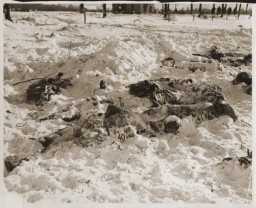
Shlamke and Shanke Minuskin pose with their baby son, Henikel, in the garden of their home. Zhetel, Poland, 1938.
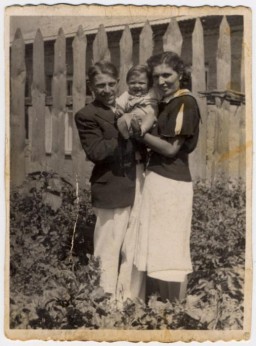
Civilians flee Warsaw following the German invasion of Poland. Hundreds of thousands of both Jewish refugees and non-Jewish refugees fled the advancing German army into eastern Poland, hoping that the Polish army would halt the German advance in the west. Many of the refugees fled without a specific destination in mind. They traveled on foot or by any available transport—cars, bicycles, carts, or trucks—clogging roads to the east. Most took only what they could carry.

Zsofi Brunn and members of her family were deported from Hungary to Auschwitz-Birkenau in June 1944. Her husband and mother were killed upon arrival. Zsofi and her daughter Anna were transferred to a labor camp in Czechosovakia. They were eventually liberated by Soviet forces in May 1945. Zsofi and Anna returned to Hungary. They moved to Rakosszentmihaly, near Budapest. There, Anna finished high school, and Zsofi directed a Jewish orphanage. This photo shows Zsofi (back row, center) posing with the…
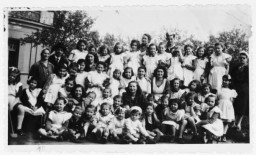
Henry Morgenthau, Jr., testifies before the Senate Foreign Relations Commission in support of the Lend-Lease bill to aid Britain. Morgenthau was secretary of the treasury under President Franklin D. Roosevelt. Lend-Lease was the name of the US policy of extending material aid to the Allies before and after the United States entered World War II.
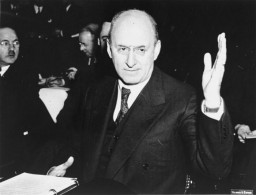
“For three months I was disguised as a man, and very successfully… I passed my mother several times … she never recognized me.” Frieda Belinfante, a half-Jewish lesbian, used this disguise to hide from Nazi authorities. In a later interview she said, “I really looked pretty good.” Her involvement in the resistance movement included planning the destruction of the Amsterdam Population Registry in March 1943, falsifying identity cards, and arranging hiding places for those who were sought by…
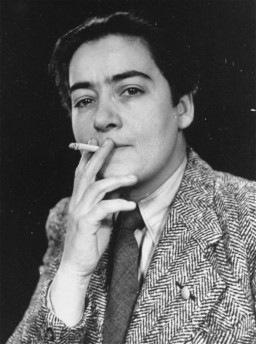
Children aboard the President Harding look at the Statue of Liberty as they pull into New York harbor. They were brought to the United States by Gilbert and Eleanor Kraus. New York, United States, June 1939.
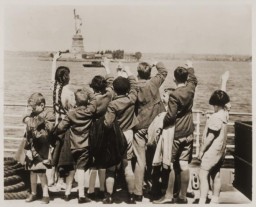
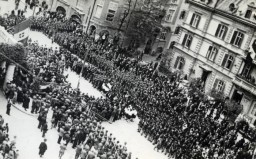
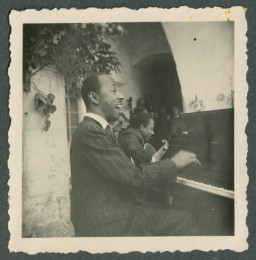
An African-American soldier with the 12th Armored Division, Seventh U.S. Army, stands guard ov...
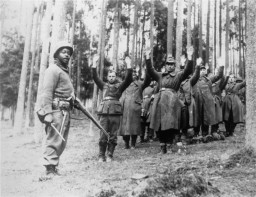
A view of the wall surrounding the ruins of the Warsaw ghetto in German-occupied Poland a few months after the ghetto's destruction. Photograph taken ca. June-October 1943.

Family portrait of the Gartenberg family in Drohobycz, Poland. None of those pictured would survive the Holocaust. Photograph taken in 1930. Top row: Julius Gartenberg, Anna Fern, Bernard Klinger, Ona Fern and Izador Gartenberg. Lower row: Marcus Gartenberg, Hinda Gartenberg with her grandaughter Tony Schwartz on her lap, Sol Schwartz, and Ida Fern.
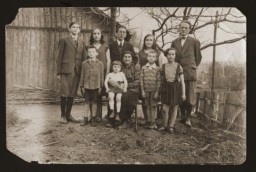
Photograph taken during the wedding of Ibby Neuman and Max Mandel at the Bad Reichenhall displaced persons' camp. Germany, February 22, 1948.
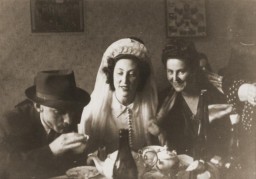
Gerhard and Margot's mother came from a Protestant family. She met her future husband when she went to work in the telephone exchange at his company. She converted to Judaism in 1920. The couple married in 1920, and in 1923 had their twins Gerhard and Margot. Both Gerhard and Margot would become active in Jewish youth movements, and took on Hebrew names (Gad and Miriam). On February 17, 1943, Gad was ordered to report to the temporary internment camp established at a former Jewish community building on…
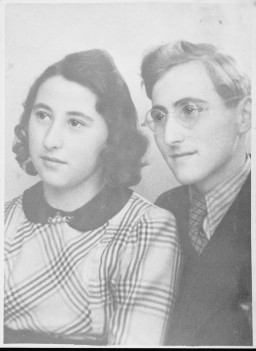
French policeman Théophile Larue, who warned his Jewish neighbors of an upcoming roundup.
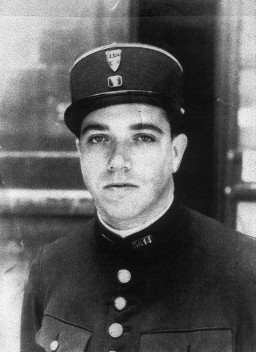
Adolf Hitler stands with an SA unit during a Nazi parade in Weimar, where the constitution of the Weimar Republic was drafted in 1919. Weimar, Germany, 1931.
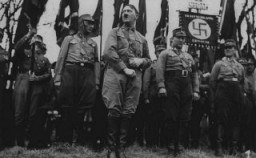
Identification picture of a prisoner, accused of homosexuality, who arrived at the Auschwitz camp on May 28, 1941. Auschwitz, Poland.
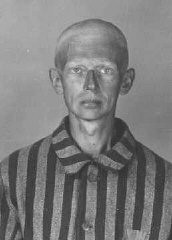
Belgium agreed to accept some of the Jewish refugee passengers of the St. Louis after Cuba and the US denied them entry. Here, Belgian police escort some of the passengers after their arrival in Antwerp. Belgium, June 17, 1939.
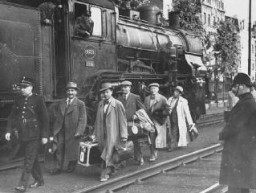
Aart Bouter, a Jehovah's Witness, was arrested by the Dutch police and deported to Sachsenhausen concentration camp. The Netherlands, 1946–47.
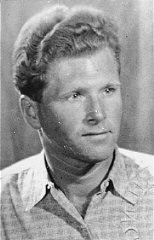
Hilda Kusserow, a Jehovah's Witness, was imprisoned for nine years for her religious beliefs. Eschborn, Germany, ca. 1979.
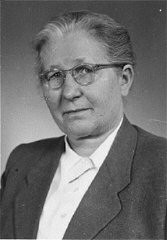
Franz Kusserow, a Jehovah's Witness, was imprisoned for nine years for his religious beliefs. Bad Lippspringe, Germany, ca. 1950.

The Kusserow family was active in their region distributing religious literature and teaching Bible study classes in their home. They were Jehovah's Witnesses. Their house was conveniently situated for fellow Jehovah's Witnesses along the tram route connecting the cities of Paderborn and Detmold. For the first three years after the Nazis came to power, the Kusserows endured moderate persecution by local Gestapo agents, who often came to search their home for religious materials. In 1936, Nazi police…
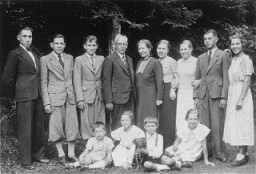
The Kusserow family home in Bad Lippspringe. The family, Jehovah's Witnesses, kept religious materials in the trunk of the car and distributed them from it as well. The Kusserow family was active in their region distributing religious literature and teaching Bible study classes in their home. Their house was conveniently situated for fellow Witnesses along the tram route connecting the cities of Paderborn and Detmold. For the first three years after the Nazis came to power, the Kusserows endured moderate…
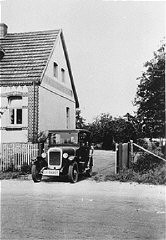
This photograph shows the Kusserow family home in Bad Lippspringe and the tram tracks in front of it. The Kusserow family members were active Jehovah's Witnesses in their region. They distributed religious literature and taught Bible study classes in their home. Their house was conveniently situated for fellow Witnesses along the tram route connecting the cities of Paderborn and Detmold. For the first three years after the Nazis came to power, the Kusserows endured moderate persecution by local Gestapo…
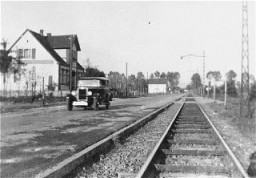
Elisabeth, Hans Werner, and Paul Gerhard Kusserow. Because they were the children of Jehovah's Witnesses, all three were forcibly removed from school on March 7, 1939, and kept separated from their family, which was accused of spiritual and moral neglect, until their liberation in April 1945. This photograph was taken at the Kusserow home in Bad Lippspringe, 1936-1939.
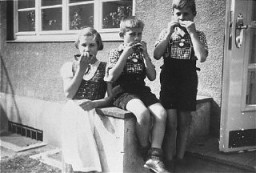
A group of Jehovah's Witnesses in their camp uniforms after liberation. These men were imprisoned in the Niederhagen bei Wewelsburg concentration camp. Niederhagen bei Wewelsbug, Germany, 1945.
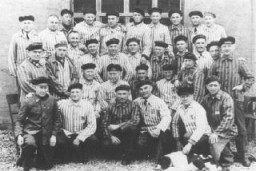
Two Roma (Gypsies) photographed near Craiova. Romania, probably early 1930s.
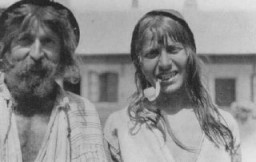
Romani (Gypsy) family near Craiova. Romania, probably 1930s.
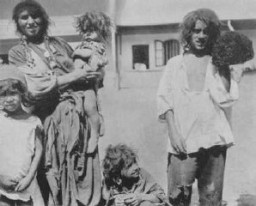
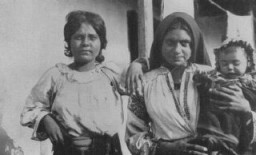
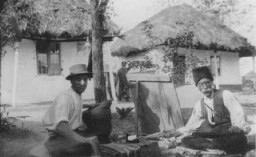
Portrait of two Romani (Gypsy) women. Both were deported to Auschwitz in 1941. Photograph taken in Czechoslovakia, 1937.
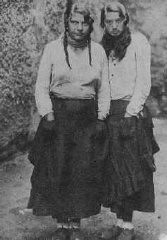
Roma (Gypsies) near Uzhgorod in 1938, including the group's chief (standing second from left).
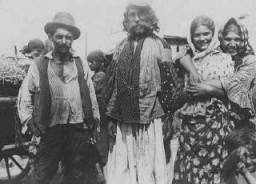
A family of nomadic Roma (Gypsies) in front of their wagon. Czechoslovakia, 1939.
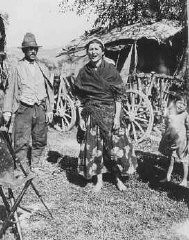
Photographer J. Kolarcik sits with a group of nomadic Roma (Gypsies). This photograph was probably taken in Czechoslovakia, 1939.
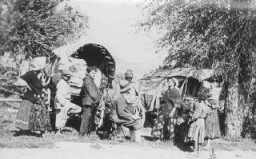
During the Warsaw ghetto uprising, German soldiers round up Jews in factories for deportation. Warsaw ghetto, Poland, April or May 1943.

Deportation of Jews from the Warsaw ghetto during the uprising. This photo was taken secretly from a building adjacent to the ghetto by a Polish member of the resistance. Warsaw, Poland, April 1943.
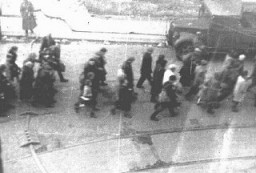
Deportation of Jews from the Warsaw ghetto during the uprising. This photo was taken secretly from a building adjacent to the ghetto by a Polish member of the resistance. Warsaw, Poland, April 1943.
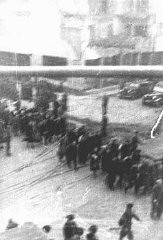
Deportation of Jews from the Warsaw ghetto during the uprising. The photograph was taken from a building opposite the ghetto by a member of the resistance. It shows Jews who were captured by the SS during the suppression of the Warsaw ghetto uprising marching past the St. Zofia hospital, through the intersection of Nowolipie and Zelasna Streets, towards the Umschlagplatz for deportation. Warsaw, Poland, April 20, 1943.
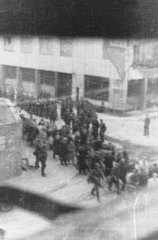
We would like to thank Crown Family Philanthropies, Abe and Ida Cooper Foundation, the Claims Conference, EVZ, and BMF for supporting the ongoing work to create content and resources for the Holocaust Encyclopedia. View the list of donor acknowledgement.